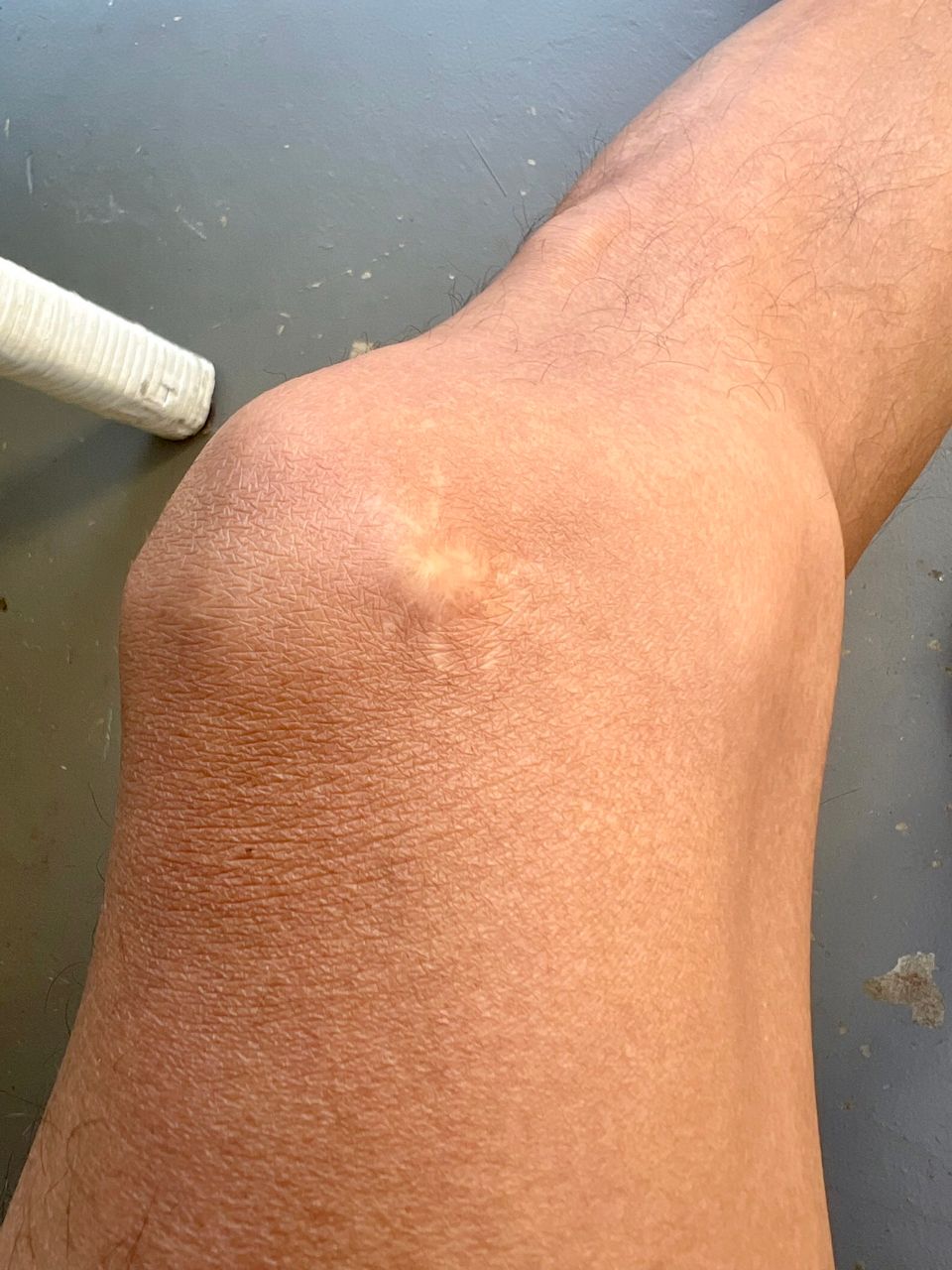ORANGE COUNTY, Calif. — Reccie Canonigo still remembers the pain in his left knee.
In 1999, Canonigo, then a 19 year old, was partying at a bar in Fullerton when a fight between two people broke out inside.
The fight spilled out into the parking lot, and many people, including Canonigo, followed to see the altercation.
The fight died down when the bar’s bouncers interrupted the fight and kicked out the people involved.
A few minutes later, as Canonigo and about 50 others stood outside, hanging out in the adjacent parking lot, he heard a “capping and then whizzing sound.”
He then experienced pain in his left knee.
“If you play sports, it’s like that feeling of bumping knees with someone,” Canonigo told Spectrum News. “It was a bone rattle. It rattles your bone.”
He looked down and saw a hole in the left knee area of his jeans. He realized he was shot. And then he heard more capping sounds.
He and the others lingering outside ran back for cover inside the club.
“There is no pause,” he said, reliving the night.

Canonigo is one of the thousands of gun violence survivors still living with the mental trauma — and physical mark — of what happened to them.
As gun violence continues in the state, most recently, the bar shooting in Sacramento, Canonigo, is dejected that gun violence is still prevalent in today's society. He's resigned.
It's, unfortunately, part of human nature, he said.
"You know, it's people," he said. "Guns don't kill people. It's people who kill people."
"War never ends whether it's in the streets here or Russia," he added.
According to the nonpartisan Public Policy Institute of California, California is experiencing a rise in gun-related deaths despite the state being locked down for most of 2020 due to the coronavirus pandemic and pandemic-related closures.
In 2019, the state saw 1,658 homicides. In 2020, the number jumped to 2,161, the report found.
"Of these deaths, gun homicides jumped by 460 in 2020 (or 40.6%)," the report states. "In other words, the increase in gun deaths accounts for 91% of the overall jump in homicides."
The report added that Latinos and black victims account for most homicide victims.
Nationally, gun violence increased 30% during the pandemic, researchers at Penn State reported.
“The pandemic has yielded harmful ripple effects that need to be addressed,” said co-lead investigator Dr. Paddy Ssentongo, assistant professor at the Penn State Center for Neural Engineering. “The spike in gun violence in the era of COVID-19 comes as a stark reminder that we can’t afford to ignore it any longer. Now is the time to focus on this public health crisis.”
The state had made some headway, with gun deaths falling over 16 years between 2000 to 2015.
According to the Associated Press, citing a study by the University of California Davis, the report found from 2000 to 2014, gun-related deaths dropped from 4.18 per 100,000 people to 3.13 per 100,000, before a slight uptick the following year. UC Davis researchers found 24,922 homicides from firearms and 23,682 suicides by gun.
For Canonigo, these are sobering facts. He could have easily been a statistic. In 1999, the year he was shot, there were nearly 3,000 gun deaths in the state.
More than 20 years after he was shot, he still remembers the night like it happened yesterday. The scar on his left knee is a stark reminder of that night out.
What started as a fun night out with friends at a bar ended at Anaheim Regional Medical Center.
He remembers the moment it dawned on him that he was shot. He remembers hearing his friend squeal for an ambulance.
Unlike the movies and television shows, there was very minimal blood loss. The bullet lodged in Canonigo’s left knee cap.
“It nicked my patella,” he said. “A little of my patella tendon is missing. A little of my knee cap is missing, too.”
The ambulance took him and another young woman, also shot, to Anaheim Memorial Hospital to be treated.
Gauging from the size of the wound, he believes the bullet came out of a .22-caliber or a 9 mm handgun. There was no final determination.
“They [the surgeon] wouldn’t let me keep the bullet,” he said, adding that he asked for it.
Police interviewed Canonigo at the hospital. He said he didn’t like that police accused him of being a gang member because he had a shaved head at that time. He was not a member of a gang.
Once police got his statement, that was the last time he heard from them.
“I didn’t hear anything about the case,” he said. “I don’t even think that [the people that shot at the crowd] got caught.”
A Fullerton Police sergeant told Spectrum News that he would look into the case.
Canonigo didn’t let that incident hold him back despite the injury and traumatic event. It fueled him.
He was able to recover after two weeks. He later joined the Army. He’s an avid biker and runner.
Still, that moment could have cost him his life. If the bullet had traveled higher or hit a major artery on his leg, he might not be alive.
He said the moral of the story: “Don’t stick around in dangerous situations. Don’t spectate.”



